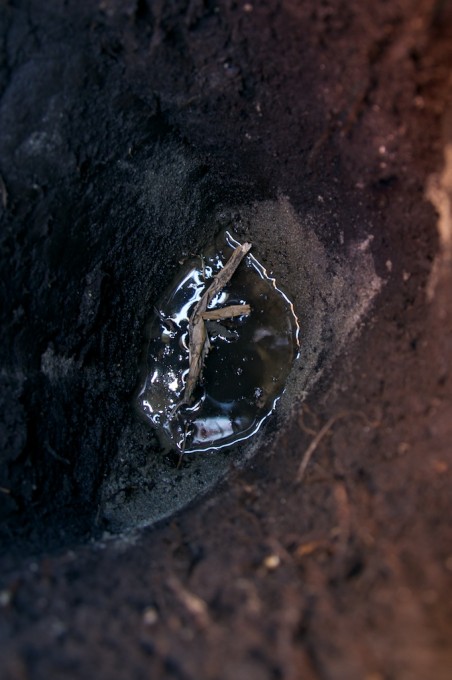

 Sab Kim
Sab Kim
Jet Propulsion Laboratory
Updates on the vegetation conditions are provided here, monitored by the crop structure team. There were localized thunderstorms on July 15th, which gave 8 mm rainfall according to the local weather data. I happened to be in the field(!) and believe the campaign fields received much more. Some fields outside the low-altitude flight lines were not visited by the structure team. The conditions of these fields were instead monitored by the vegetation teams.
All the crops grew enough to start to make grains, and the percent ground covered by the vegetation was 80% to 100%, according to observations made between July 7th and 17th. The corn plants grew to 225cm high and will not grow much further even after the rainfall on 15th. Instead tassels and ears are developing, but no cobs yet.
For more information, visit the SMAP Blogs From the Field site.
 Steven Chan
Steven Chan
Jet Propulsion Laboratory
As an avid photographer, I totally agree with what Diane Arbus said, “I really believe there are things that nobody would see if I didn’t photograph them.” So here in this blog I’m taking a more photojournalistic approach. Enjoy!
My work in SMAPVEX12 primarily consisted of two tasks: Vegetation sampling in crop fields and soil moisture sampling in forests. The two tasks alternated according to PALS flight schedule and weather conditions. Because I arrived in July, my observations were all about the later phase of the campaign.
Our cropland vegetation sampling involved measurements of optical parameters (e.g., LAI and NDVI) and allometric parameters (e.g., height and diameter). On a typical day we visited up to six fields to collect data and actual plant samples.

Wheat had matured quite a bit since the beginning of the campaign. Here Brian, Hida (U. Guelph), and Tracy were carrying plant samples for further analysis at the ROC.

Tracy (U. Guelph) and Brian (U. Manitoba) were making LAI and NDVI measurements, respectively, in a soybean field.

Example of a typical soil profile: Litter (not shown), then organic layer (brownish orange layer), then soil (gray-colored layer), and then groundwater.
For more information, visit the SMAP Blogs From the Field site.
Grant Wiseman
Agriculture and Agri-Food Canada
Another hot and dry week here in southern Manitoba has us missing the rain just a little bit. We have experienced a very nice dry down cycle in weeks 3 and 4 after a wet up period initially in weeks 1 and 2. By all accounts this will contribute to a very informative and descriptive dataset.
Some sandy loam soils have approached zero volumetric moisture levels, while many clay soils remain high at 25 or 30 percent but it has become rather difficult to insert moisture probes. Even morning dew levels have subsided. Dare I say, “Let it rain?”
Field crews are well into their groove with many not requiring the use of GPSs or maps for navigation any longer. On a much-deserved scheduled down day some team members took in the Canada Day festivities and fireworks on July 1st at Assiniboine Park or The Forks.
We’re two thirds of the way through and going strong, looking forward to the home stretch!
For more information, visit the SMAP Blogs from the Field page.
Narendra Das
Jet Propulsion Laboratory
I am signing off from SMAPVEX12 at Winnipeg with good vibes, pleasant memories and expectation that this will be a very successful campaign. I hope that, like me, most of my teammates have learnt substantially about the study area and had a great field sampling experience, and have also made many good friends during interactions and group dinners.
I conducted crop structure sampling of various crops (corn, beans, canola, wheat, and pasture) for the last one month and witnessed the growth spurt in crops within the one month span. Even though I knew about crop responses to weather variables I was amazed to see such a rapid response of crop growth to conducive environment conditions, especially for canola and corn.
For more information and pictures, visit the SMAP Blogs from the Field page.
Grant Wiseman
Agriculture and Agri-Food Canada
Week 3 provided 7 days of much needed sunshine allowing for a study-site-wide dry down of soils and a significant increase in crop growth. Field crews were able to collect vegetation samples twice and soil moisture measurements four times!
For more information, visit the SMAP Notes from the Field page.